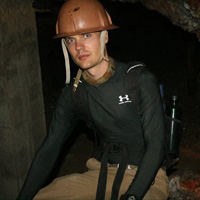 Geomorphic analysis of late Quaternary activity of the Earthquake Valley and Hot Springs-San Felipe Fault Zones, and their role in slip transfer between the northern Elsinore and southern San Jacinto faultsErik Gordon Friday, March 27th, 2015 |
| ABSTRACT
We studied the relative tectonic geomorphic expression of faults within and between the Elsinore and San Jacinto fault zones in southern California to test recent models on the evolution of the southern California fault system. Prior work characterized the Hot Springs/San Felipe fault zone as the primary player in the transfer of slip between the northern Elsinore fault to the southern San Jacinto fault, and also inferred that this fault zone formed during the past 1.1-1.3 Ma. From analysis of geomorphic expression based on field studies, aerial photography and GoogleEarth imagery, these faults are essentially transparent in the modern geomorphology and display little to no evidence of Quaternary motion. The Lancaster fault, which is one of the primary northern elements of this fault system, is demonstrated to have been active during the Pliocene and inactive for at least the past several hundred thousand years. The San Felipe fault does have some expression of Quaternary activity, albeit at a very low rate. In contrast, the Earthquake Valley fault is very well expressed in the modern landscape with numerous examples of offset and deflected drainages, sags, pressure ridges, linear hill-side scarps and benches, consistent with recent assessments of a 2-3 mm/yr slip rate. We also identify and document numerous minor faults throughout the Vallecito and Fish Creek mountains that show evidence of latest Quaternary motion in the form of scarps in alluvium and bedrock, sidehill benches, and sag features. Based on the location and orientation of these small faults, we infer that the Vallecito-Fish Creek Mountain uplift is a consequence of the transfer of slip between the Earthquake Valley and southern San Jacinto fault zones, similar to the Palomar-Agua Tibia Mountain uplift that we attribute to the transfer of slip between the northern Elsinore and Earthquake Valley faults. From these new observations, we conclude that 1) the Hot Springs/San Felipe fault zone likely originated in the Pliocene and is mostly inactive in the modern tectonic regime; 2) the Earthquake Valley fault is the primary fault that transfers displacement from the northern Elsinore fault to the southern San Jacinto fault; and 3) Palomar Mountain and the Vallecito-Fish Creek mountains are large pressure ridge systems that have been uplifted primarily due to leftrestraining steps between the Elsinore and Earthquake Valley faults and the Earthquake Valley and southern San Jacinto faults, respectively. |

